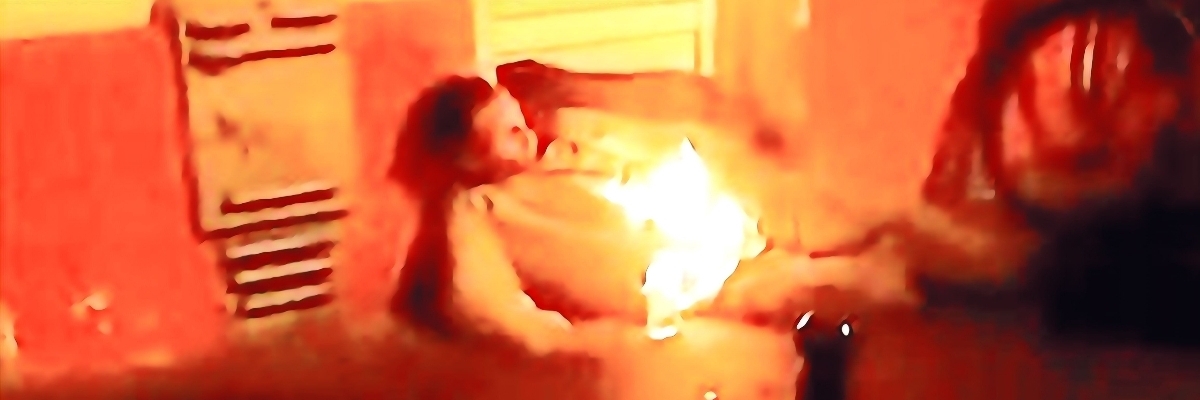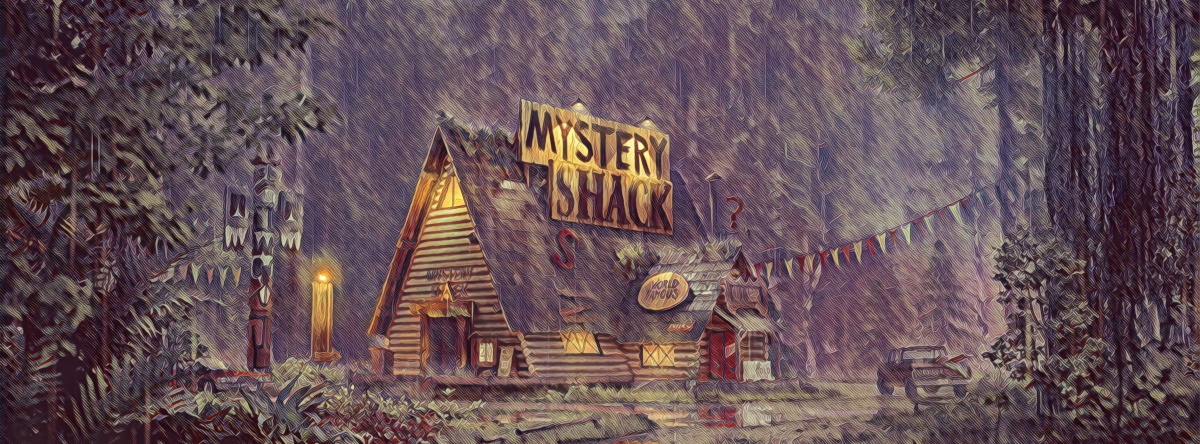Spontaneous Human Combustion

In December 2010, an elderly man from Galway, Ireland, was found burned to death in his home. In September 2011, a coroner ruled that the man died because of spontaneous human combustion (SHC). It was determined that the furnace he lay next to was not the source of the blaze, there was no accelerant on the body, and there was no evidence of foul play. There were burn marks on the floor and ceiling directly below and above the body, but no other marks in the room, which is reminiscent of previous SHC cases. This was the first time it has made an official finding of SHC.
THE FIRST RECORDED CASE
The first case of SHC that we know of was in the late 1400s when Polonus Vorstius, an Italian knight, vomited flame after consuming 'two ladies' of strong wine, and then fully burst into flames. No one else had any problem with the wine, and people were baffled as to how this happened, stating the wine disagreed with him.In 19th century, Charles Dickens was accused of legitimising a thing of imagination by using SHC to kill off one of the characters in his novel “Bleak House.” Even at that time, Dickens could refer to research showing 30 historical cases.
FEET AND SKULL LEFT BEHIND
In January 1980, the body of 73-year-old Henry Thomas in Ebbw Vale in Gwent, Wales was found; a mass of white ash with a pair of human male feet clothed in socks on one end and a blackened skull on the other. Nothing else in the room had burned except some of the wooden-framed armchair Thomas had been sitting on.Also, the door to the room was sealed by a draught excluder, and there was not enough oxygen to support further combustion. So why did the body continue burning to a white powdery ash?
How could a body, which contains around 45 litres of water, be reduced to ashes when highly flammable material such as the carpet and couch remain relatively untouched?
In this case, the coroner, Colonel Kenneth Treasure, gave the cause of death as 'burning', accepting the pathologists theory that Thomas, a non-smoker, had fallen head first into the open coal fire, set his head alight, then, without disturbing the burning coals, the fire irons or the pile of chopped sticks in the hearth, lifted himself from the fire, sat back in the armchair, stretched out his legs in front of the television and burned to death.
Anyone can see that this theory requires further analysis. John Heymer, one of the world's leading SHC researchers, and the former Scene of Crime Officer at the time from CID, felt the same. If Thomas fell into the fireplace, why did he then sit back down in his armchair instead of running to the kitchen to try and put out the flames? If he did not fall into the fire, where did the fire start? And why was nothing else in the room burned?
THE EVIDENCE
The total number of cases of SHC in the UK might be in the region of 200 people per year. But is there any hard evidence for this phenomenon?One of the strongest arguments for the existence of SHC is the fact that not even a crematoria can completely reduce a corpse to ashes. Following a cremation, the bones must be ground up in a machine known as a cremulator to produce the 'ashes', which are grey in colour, not white. The white ashes of Henry Thomas were pure white, indicating a heat far hotter than the 900°C of a crematorium.
BONES AND ASH
In 1986, a 58-year-old retired healthy firefighter, was burned to death in his New York home. His body was reduced to a few bones and 2 kg of ash. Nothing else in the house had been affected - even a box of matches close to the body had not ignited.To reduce a body to ash so completely, a fire would need a temperature of around 2,500°C. The average house fire, which can destroy a whole building, only reaches around 200°C.
THE WICK EFFECT
The scientific community came up with the 'wick effect' theory. However, it requires a body that is suitably obese, wearing flammable clothing in sufficient layers to enable the clothes to act as an external wick and the fat to burn like a candle. If the victim is not obese, then there must be a good source of oxygen and the body needs to be in continuing contact with a sufficiently hot flame.FALLING INTO A COAL FIRE
Cases of the 'wick effect' do exist. For example, in 1965, Professor Gee at Leeds University Hospital reviewed the case of an 85 year old woman who fell into a coal fire as a result of a stroke or heart attack. She was not discovered for some hours. But, while she had burned according to the 'wick effect', her charred remains showed different signs to those of alleged SHC.DISPROVING THE WICK EFFECT
The issue is that sceptics assume that instances of SHC are cases of the 'wick effect'. However, there appears to be substantial differences. In most wick-effect cases, the victims are dead before coming into contact with an obvious source of ignition, Clothes burn to ash even on portions of the body that have not burned and the burning process requires 24 to 48 hours to effect results similar to cases of SHC.The end result of the 'wick effect' is blackened bone. The reduction of bone to ashes has yet to be demonstrated in laboratory conditions. Even placing the bone in a blast furnace for eight hours can not reduce it to ashes.
'WICK EFFECT' EXPERIMENT
A laboratory 'wick effect' experiment is carried out in the following manner:A 'human candle' is simulated by wrapping a bone in pork flesh and fat. Pork amplifies the effect as it combusts more easily than human fat. The pork is then wrapped in cloth.
When a cigarette is dropped on to the 'candle' it only singes the cloth, therefore a flame must be held against it to set it alight.
Once the cloth burns to ash, the flames die and the fat does not catch fire. This is how a human body burns under normal circumstances.
Therefore, to get the 'candle' to burn further, a gas torch is used to render out sufficient water from the fat to allow burning to commence.
It takes another 50 minutes to get to this charred stage. By now, the burning has stopped, and the blackened bone is protruding from each end.
The only way to remove all the fat is by using a wire brush. Beneath the surface, the bone is unburned. In SHC, there would be no bone left.
ORIGIN INSIDE THE BODY
Heymer and Larry Arnold, head of ParaScience International, a paranormal research group in the US have independently amassed an invaluable body of evidence that points firmly away from the 'wick effect' as an explanation for SHC. The evidence shows that the fire from SHC originates inside the body, and the temperatures are high enough to reduce bone to ashes - two factors not explained by the 'wick effect'.The most scientific explanation for SHC involves mitochondria within our cells. These supply energy to the whole body by triggering small chemical reactions.
- If one mitochondrion is defective, it could release too much energy, causing an explosion of hydrogen and oxygen.
- If the surrounding mitochondria are affected by the surge of energy and they too explode. A chain reaction begins.
- As the mitochondria explode, the cell is engulfed and then blows apart. The energy released starts another chain reaction.
- More and more cells are destroyed. Within a few minutes, muscle, internal organs and flesh are reduced to ash by the blue flame.
EXPLOSIVE THEORY
SHC likely results from the reaction of hydrogen and oxygen within the body on a cellular level. The power of the right hydrogen-oxygen mixture can be seen in NASA or SpaceX Shuttle rockets, which use the two elements as a fuel for launching. So, there is no doubt that the hydrogen-oxygen reaction can produce heat sufficient to reduce human bones to white ash.While there are other theories for SHC - including ball lightning, magnetic forces, and even 'phosphinic farts' caused by ignited gut methane, no-one has witnessed SHC from start to finish.
WITNESSING THE FIRE WITHIN
There are, however, people who have witnessed fires that defy explanation. One such witness is fireman Jack Stacey, who, in 1967, was called to a fire in a derelict house in London. There was no evidence of fire damage to the house but, as Stacey looked inside, he came across the burning body of a homeless man, known locally as Bailey.Stacey saw a slit about four inches long in the abdomen of the man and the flame was coming through it like a blow torch. There was no gas or electricity in the building, and no matches were found. To douse the flames, Stacey resorted to feeding the firehose into the man's body, extinguishing the fire at its source.
FLASH OF LIGHT
In 1982, in Edmonton, London, Jeannie Saffin, a 62-year-old disabled woman, burst into flames while sitting in her kitchen. Her father was seated in the kitchen too and became aware of a flash of light. On turning to Jeannie, he saw that she was enveloped in flames around her face and hands.Jeannie did not cry out or move. Her father pulled her over to the sink and called to his son-in-law, who ran into the kitchen to see flames were coming from her mouth which were making a roaring noise. They dowsed the flames, but Jeannie died later in hospital.
DENYING THE FACTS - A COVER-UP?
The police could not find a cause of death and the inquest made a verdict of 'misadventure'. However, Jeannie's relatives believed her to be a victim of SHC.To the family, the coroner, Dr J. Burton, said, "I sympathize with you but I cannot put down SHC because there is no such thing." Misadventure is the same as 'accidental death'. But how can a death be judged accidental when the cause is not known?
While the authorities may have suspected the cause of death to be SHC, the lack of scientific proof of SHC at the time prevented a solid conclusion from being made.
While it seems strange that the authorities should accept the stories of two men who say that a disabled woman burst into flames and died from her burns, there was clearly no other explaination. Coroners would not be able to reach a conclusion of SHC until the verdict in Ireland in 2011.
With some people across the world claiming to have survived SHB, is it a real thing? Or is there another explanation? What do you think?
SOURCES:
https://www.bbc.co.uk/news/world-europe-15032614
https://www.history.com/news/is-spontaneous-human-combustion-real
https://thepostmortempost.wordpress.com/2015/06/24/survivors-of-spontaneous-human-combustion/
https://gizmodo.com/10-cases-of-spontaneous-human-combustion-5855700
https://www.crystalinks.com/shc.html

